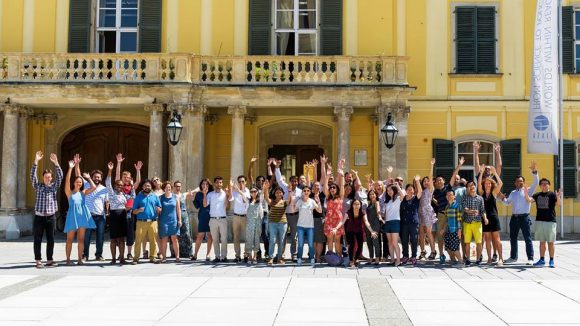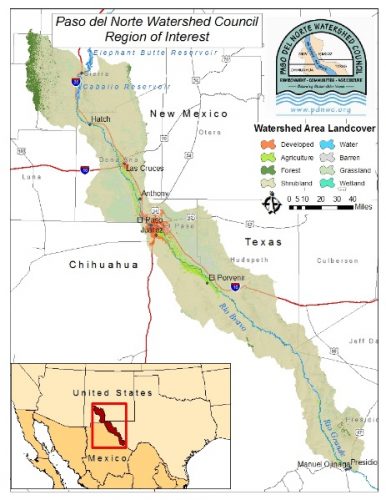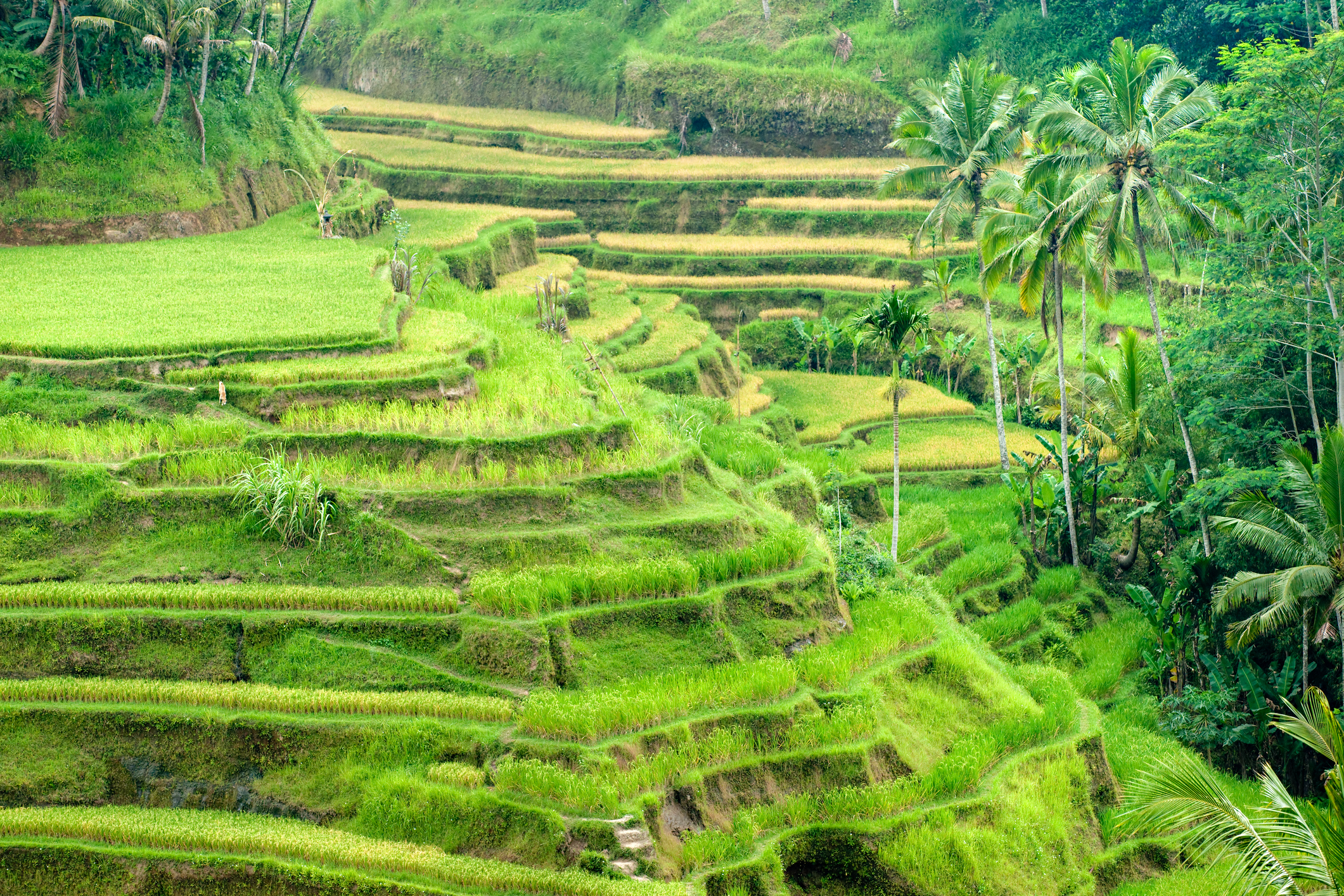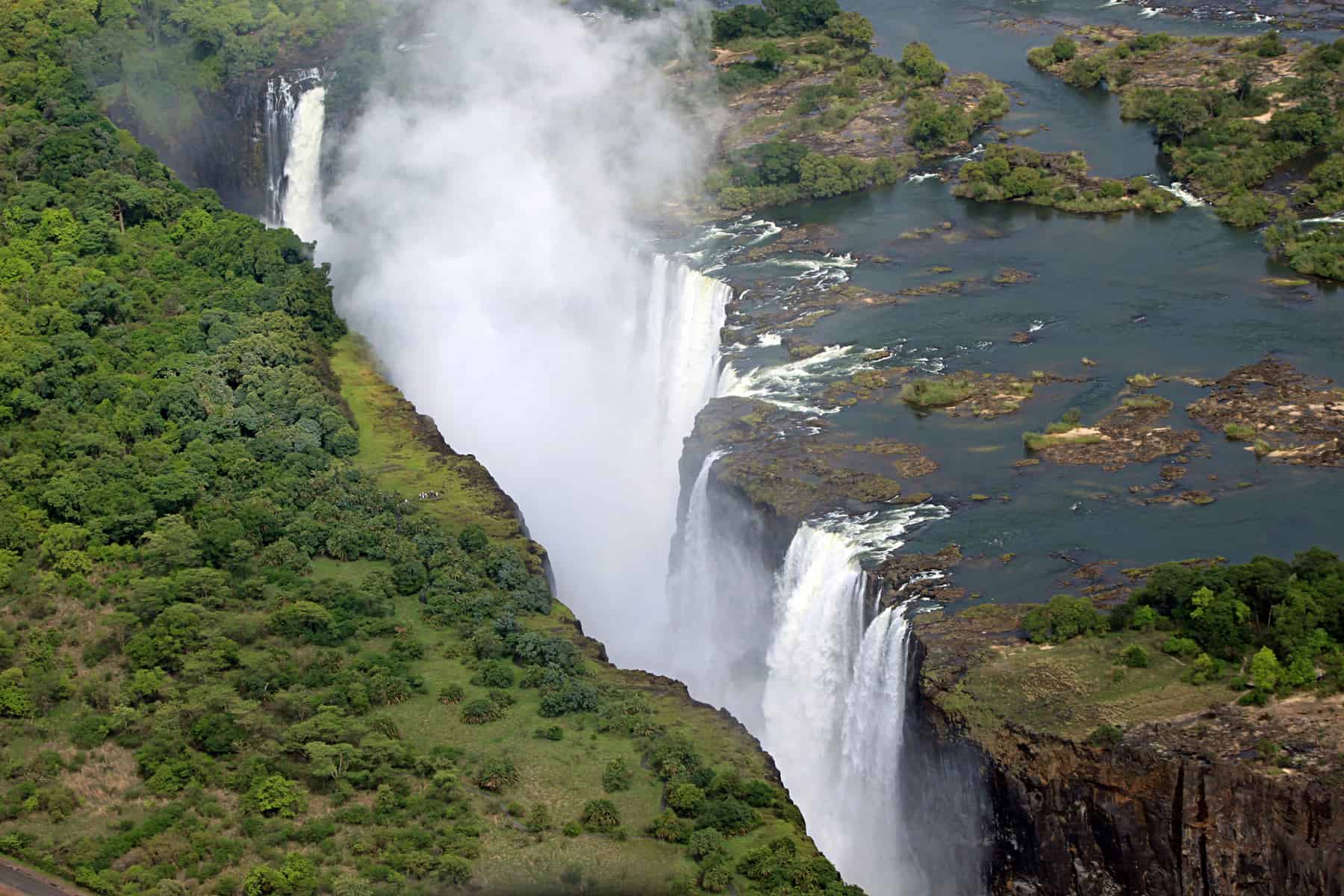Nov 2, 2016 | Alumni, Young Scientists
By Muenire Koeseoglu, Young Scientists Summer Program alumnus.
In the summer of 2016 I traveled to Austria to take part in the IIASA Young Scientists Summer Program (YSSP). Being part of this intense experience, not only in terms of scientific research but also in a social and networking sense, was very rewarding. I learnt a lot, travelled a bit, and made many new international friends and valuable connections for life. However, if you are thinking about applying to the YSSP, some prior preparation and an open mind are essential to absorb what the environment offers.
My YSSP project examined water pollution issues in Scotland, looking into a trading framework that would help address diffuse pollution. My advice to any potential YSSPer working on applied topics like myself is to identify their research question in broad terms with room for possible change. Understand the policy landscape around the issue to establish the policy relevance, and possible partners in the field who might be willing collaborate as a part of their preparation before arriving to IIASA. Establishing connections might be time-consuming, and people might not necessarily be interested in taking the time to help a postgrad student or in sharing information or data which might be confidential, yet even a few successful attempts will be useful in terms of getting site-specific information, data, and feedback. It will also save you time during the YSSP and potentially help clarify the real-life problems beyond the literature or directives. For instance, my initial proposal for the YSSP was to design a trading scheme based on water allowances among different water users at catchment level. However, after relevant consultations, I realized that designing a scheme that would enable trading permits to pollute rather to take water would be more applicable to Britain and especially Scotland, where diffuse pollution impacts affects many more catchments than do water shortages.

2016 YSSP participants. © IIASA
From my perspective there were many things that made my YSSP a special experience but the most important factor has been the people, my YSSP peers, the IIASA Advanced Systems Analysis Program (ASA) where I was based, and especially my supervisors. As a PhD student in the field of applied land economics, working with mathematicians (as my supervisors and most of my ASA colleagues were), was a very formative experience, as the world of mathematicians is very different to my career so far. Crucially, my supervisors taught me to deal with uncertainty not only in the data but also in the research structure and short-notice changes, and to realise the wider applications and possible extensions of the project rather than being trapped in details. After all, you can return to the details once you have made progress in your overall aims. Moreover, mathematicians are fast thinkers with a “can-do” attitude: a perfect combination for finding a solution in mathematical terms to the next practical problem you face.
I believe I have benefited a lot from this trans-disciplinary cooperation and look forward to working with people from different disciplines again, to learn from their perspectives and expertise.
Note: This article gives the views of the author, and not the position of the Nexus blog, nor of the International Institute for Applied Systems Analysis.
Sep 26, 2016 | Water
By Luzma Fabiola Nava, IIASA Water Program
North American leaders have recently announced initiatives on climate change, clean energy, the environment, and migration. But lacking from these discussions is a much-needed focus on the shared water resources that bind these countries. The Paso del Norte is a boundary region between the USA and Mexico where cooperation and joint action are needed to secure reliable and sustainable shared water resources.

Image: Paso Del Norte Watershed Council: http://www.pdnwc.org/
The Paso del Norte (PdN) emblematizes an important regional focus of attention. It is located right at the midpoint of the USA-Mexico border and the Rio Grande/Bravo basin. The region extends approximately 550 km along the Rio Grande from Elephant Butte Reservoir in southern New Mexico to the confluence of the Rio Conchos in Presidio County, Texas. With a population of 2.5 million, the Paso del Norte constitutes one of the largest international cross-border regions in the world and the largest boundary metropolitan area between three states (New Mexico, Texas and Chihuahua), and two countries (the USA and Mexico).
Water is scarce in the channelized Paso del Norte. The Paso del Norte is one of the most irrigation intensive and environmentally damaged regions in the Rio Grande Basin. With an average rainfall of only about 150mm and increasing evaporation rates, crops such as maize, alfalfa, pecans, chili, and cotton are growing in this semi-arid region. Water competition is intensifying due to constant agricultural water use and growing urban water demands. Climate change is expected to reduce water availability, affect the quality of aquatic environments, and accentuate sustained drought and water scarcity.
Water scarcity will greatly worsen in the Paso del Norte region if current water policies and regulations persist and climate projections prove correct. Without new international cooperation, cross-border regions like the Paso del Norte, which includes the major cities of Las Cruces, El Paso, and Ciudad Juarez, will face a water resource crisis, as climate change and population growth place greater pressure on an already precarious system. This is why laws and regulations governing water in the Paso del Norte need to be adapted to this reality.
If we want to prevent a water crisis in this binational region, we should start working together to build institutional resilience by means of enabling regional openness and flexibility of the existing ensemble of rules and policy processes. Creating resilient water institutions in the Paso del Norte region will help the design of an ad-hoc regional basin management approach, featuring increased dialogue and coordination among all relevant parties aiming to secure water in the region. A coordinated and sustained binational effort – from the states and non-state actors- is of paramount importance to find solutions to shared problems and adapt the way water resources are being managed across the border.
The Paso del Norte Task Force, created in 1998, represents the most appropriate regional water stakeholder group with a high potential to advance sustainable water management in the region—but it needs to be revitalized. A new injection of funds could prevent this group from falling silent. . Through a collaborative effort, the Paso del Norte Task Force is in the best position to make the most effective use of the existing technical capacities and water infrastructures to adapt the management of water in the region. Its reactivation is essential to prepare an ad hoc water management plan for the region, and better respond to the challenge of securing adequate water supplies.

The Rio Grande/Bravo Basin ©Luzma Fabiola Nava | IIASA
References
Nava, L.F.; Brown, C.; Demeter, K.; Lasserre, F.; Milanés-Murcia, M.; Mumme, S.; Sandoval-Solis, S. 2016. Existing Opportunities to Adapt the Rio Grande/Bravo Basin Water Resources Allocation Framework. Water, 8, 291.
US Bureau of Reclamation. SECURE Water Act Section 9503(c) — Reclamation Climate Change and Water 2016. Available online: http://www.usbr.gov/climate/secure/ (Accessed on August 21, 2016).
Boyd, E. 2012. “Adapting to global climate change: evaluating resilience in two networked public institutions”, Adapting Institutions: Governance, Complexity and Social–Ecological Resilience, ed. Emily Boyd and Carl Folke. Published by Cambridge University Press, 244 – 263 p.
Note: This article gives the views of the author, and not the position of the Nexus blog, nor of the International Institute for Applied Systems Analysis.
Sep 13, 2016 | Sustainable Development
By IIASA Deputy Director General Nebojsa Nakicenovic and Caroline Zimm, IIASA Transitions to New Technologies Program and The World in 2050 (TWI2050) initiative. (Originally published on The Guardian)
2015 marked a historic turning point. The sustainable development goals (SDGs) unanimously adopted by the United Nations last September provide an aspirational narrative and specific targets for human development: a world free from hunger, injustice and absolute poverty; a world with universal education, health and employment; a world with inclusive economic growth, based on transparency, dignity and equity.
The 17 SDGs’ call for “global citizenship and shared responsibility” and provide legitimacy for a new global social contract for a grand transformation toward a sustainable future. They fully acknowledge the scientific advances achieved during the last three decades that have established compelling evidence that otherwise, as the UN general assembly warned, “the survival of many societies, and of the biological support systems of the planet, is at risk.” Humanity has pushed the Earth system and its global commons to their limits and the SDGs provide us with the long-needed paradigm shift towards realizing the opportunity of a sustainable future for all.
The climate agreement adopted in Paris last December has further strengthened understanding that our society depends on sustainable stewardship of the global commons, shared by us all – and particularly on the stability of the climate system. The Earth system can no longer be viewed as an economic or social externality. Last year we moved beyond the traditional view of global commons as merely the common heritage of humankind outside national jurisdiction. Now we must move beyond national sovereignty to deal with the Earth system and human systems holistically, as the SDGs require. The Paris agreement is a huge step in the right direction.
Time is running out, so we must take urgent action to implement the UN 2030 agenda. Just 14 years are left – less than the wink of an eye in the history of human development, or of the Holocene’s stable Earth systems. But where to start? Which of the 17 goals, which of the 169 targets should be tackled first? Policy makers, the media, civil society and scientists all ask these questions.
However, the 2030 agenda stresses that the SDGs are indivisible and integrated – and cumulative, since efforts to achieve them must be sustained well into the second half of the century, especially in preserving the regulating function of the global commons, Some of the goals, such as SDG13 on climate, must operate on a time scale longer than century.

Sustainable Development Goal 6: Clean water and sanitation.
Photo by Albert Gonzalez Farran, UNAMID
Moreover, there are interactions between and among the SDGs. For example, achieving SDG7, the energy goal, could jeopardize SDGs related to water, health and climate. Tackled in harmony, however, these goals can support one another: there would, for example, be clear health benefits from reducing indoor and outdoor air pollution through global decarbonization. Jointly implementing all the SDGs would contribute both to further human development and to safeguarding the commons and the stability of the Earth systems. Importantly, joint implementation that avoids silo-type thinking would be cheaper and faster than tackling them separately.
All these goals should be achieved in such a way as to maximize synergies and minimize investment costs and trade-offs. The SDG credo “leave no one behind” also applies to the SDGs themselves. They are indivisible. We have to deliver on all of them if we want to succeed.
The SDGs are very ambitious but it appears that tackling them together will help humanity make rapid progress and enter a new era for human societies and the Earth system. Yet, many interactions – and their scope – are unknown, and this hampers holistic policy making. We lack clear understanding of the benefits of achieving SDGs and of costs of inaction, especially when it comes to regional and national differences. We urgently need this fact-based information.
We have a plethora of knowledge, but need new ways to synthesize, integrate and share it so as to use its full potential in support of the SDGs and the global commons. Science – one of the strongest voices of the environment in governance – must become more active and leave its ivory tower to engage more intensely with other stakeholders.
This is why we at IIASA, together with the Stockholm Resilience Center, and the Sustainable Development Solutions Network have launched the scientific initiative The World in 2050 (TWI2050), designed to provide the scientific knowledge to support the policy process and implementation of the 2030 agenda.
TWI2050 aims to address the full spectrum of transformational challenges in fulfilling the SDGs in an integrated way so as to avoid potential conflicts among them and reap the benefits of potential synergies through achieving them in unison. This requires a systemic approach.
The time for “climate-only” or “economic development-only” approaches is over. We urgently need an integrated understanding of the processes that account for the inter-linkages between the economy, demography, technology, environment, climate, human development, all global commons and planetary boundaries. TWI2050 brings together leading policymakers, analysts, and modelling and analytical teams to collaborate in developing pathways towards the sustainable futures and policy frameworks necessary for achieving the needed transformational change.
Such a grand transformation goes beyond a purely technology-centered view of the world or the substitution of one technology by another. It encompasses social and behavioral changes at all levels, as well as technological ones. Incremental changes, now being experienced in some areas, are useful but will not suffice: we have waited too long and the window for action is closing rapidly in some domains including such global commons as climate. We will need radical changes in human behavior and technological paradigms. TWI2050 will look beyond 2030 to 2050 – and, in some cases, even to 2100 – to draw a vision of the world where the SDGs are eventually fulfilled.
The SDGs and the Paris agreement show what institutional international governance can achieve with joined forces. We have entered a new era of global governance, acknowledging the complexity and the connectivity of human development with the global commons and the Earth system. TWI2050 hopes to serve the global community with the best science available in tackling these key global challenges for humankind.
This article originally appeared on The Guardian.
Note: This article gives the views of the authors, and not the position of the Nexus blog, nor of the International Institute for Applied Systems Analysis.
Jul 8, 2016 | Energy & Climate
By Daisy Brickhill, IIASA science writer and editor.
Many of the options proposed for achieving a stable climate rely on ‘bioenergy with carbon capture and storage’ — burning plant matter for energy, capturing the carbon, and storing it underground. However, this technology has hardly been deployed on anything approaching the large scale. Is it a realistic tool for climate mitigation?
Limiting global warming to 2°C above pre-industrial times has long been a reference point for policymakers and researchers trying to reduce the chances of dangerous climate change. The 2015 Paris climate summit went even further, with countries agreeing to try and limit temperature rise to 1.5°C.
However, while there is a strong scientific consensus that we need to aggressively cut greenhouse gas emissions immediately, there is also growing evidence that we may not be able to achieve the necessary reductions in the time available. This means that we may need a way of removing CO2 already in the atmosphere — a process known as negative emissions.
Negative emissions can come in many forms: from simply planting more trees, to crushing rocks that naturally absorb CO2. One widely considered option is using plant matter as a fuel to produce energy, then capturing the CO2 that is emitted and storing it underground. This is known as bioenergy with carbon capture and storage (BECCS).
This latter technology is cited by research as being an important part of restricting warming to safe — or at least safer — levels since it contributes to both carbon sequestration and decarbonization of the energy system. In fact, more than half of the future scenarios that give at least a 66% chance of limiting warming to 2°C, which were developed for the Intergovernmental Panel on Climate Change (IPCC), feature BECCS.
However, the technology remains mostly untested on a large scale and there are doubts about its sustainability in terms of land and water use, and other potentially negative impacts on the environment. With so many IPCC scenarios including BECCS, information on whether it is at all a practical solution is desperately needed.
A recent IIASA study addresses deployment of BECCS in Indonesia, examining whether adapting existing coal-fired power stations so that they can burn a mix of coal and plant waste from agriculture (such as seed kernels or stems that are usually discarded), is more effective than building specific biomass-burning power stations.

Rice paddies in Indonesia. Plant waste from agriculture can be used in bioenergy with carbon capture and storage systems.
The team found that although both options saved the same amount of CO2, the combined stations were more efficient, producing more electricity for the amount of biomass burnt. “More efficiency means that burning biomass in adapted coal-fired power stations would be more economically viable,” says IIASA researcher Ping Yowargana, coauthor of the study. “It is also likely to be easier and cheaper to convert existing coal power stations than build new specific biomass-burning stations. With lower investments and existing infrastructure, policymakers and other stakeholders are more likely to embrace the idea.”
There are limitations: the study results indicate that under the current conditions it is not possible to burn any more than 30% biomass in a combined power station, for instance. There are also uncertainties surrounding whether it is possible to collect enough biomass on the scale needed. “We need to do further work on the logistic and financial feasibility of BECCS,” says Yowargana. “But these results are broadly general, and can be applied to other countries and situations, making them a valuable starting point.”
And while a complete conversion to a decarbonized energy system is needed in the long term, this work points the way to how BECCS might be deployed now to help prevent the damaging climate change we have sown for ourselves.
Reference: Hetland J, Yowargana P, Leduc S & Kraxner F (2016). Carbon-negative emissions: Systemic impacts of biomass conversion: A case study on CO2 capture and storage options. International Journal of Greenhouse Gas Control, 49. pp. 330-342.
Further reading:
https://www.carbonbrief.org/beccs-the-story-of-climate-changes-saviour-technology
Moreira, J. R., Romeiro, V., Fuss, S., Kraxner, F. and Pacca, S. A. (2016) BECCS potential in Brazil: Achieving negative emissions in ethanol and electricity production based on sugar cane bagasse and other residues. Applied Energy, 179. pp. 55-63. Item availability may be restricted.
Smith, P., Davis, S.J., Creutzig, F., Fuss, S., Rogelj, J., McCollum, D., Krey, V., Grubler, A., Jonas, M., Kraxner, F., Nakicenovic, N., Obersteiner, M. and Rogner, M. (2016) Biophysical and economic limits to negative CO2 emissions. Nature Climate Change, 6 (1). pp. 42-50.
Fuss, S., Canadell, J.G., Peters, G.P., Tavoni, M., Andrew, R.M., Ciais, P., Jackson, R.B., Jones, C.D., Kraxner, F., Nakicenovic, N., Le Quere, C., Raupach, M.R., Sharifi, A., Smith, P. and Yamagata, Y. (2014) Betting on negative emissions. Nature Climate Change, 4 (10). pp. 850-853.
Note: This article gives the views of the author, and not the position of the Nexus blog, nor of the International Institute for Applied Systems Analysis.
Jun 30, 2016 | Postdoc, Water
By Edward Byers, Postdoctoral Research Scholar, IIASA Water, Energy, and Transitions to New Technologies programs
Scenario analysis, a process for comparing alternative futures, has been a fundamental tool in sustainability and systems research, but less prominent in the water field. Recently, researchers at IIASA have been applying scenario analysis to their modelling capabilities to tackle global water issues.
Last week, a high level group of water experts met at IIASA for the Water Futures and Solutions (WFaS) Stakeholder Focus Group. WFaS is a flagship initiative from IIASA challenged with understanding future water resource issues, and identifying solutions to problems like water scarcity and water access. However, when a recent fast track assessment found that even its most sustainable scenario, would still result in water scarcity in some river basins due to growing demands, researchers realized that fresh thinking was required. So in last week’s meeting, IIASA water researchers were on the search for more sustainable and transformational solutions. The efficacy of these new sustainability scenarios will be tested in IIASA’s new ensemble of global hydrological models and presented in time for the next World Water Forum 2018.

Victoria Falls on the Zambezi River. In the Zambezi basin, water is abundant but there are challenges in getting that water to the people who need it, particularly as the population grows in the future. (cc) Pius Mahimbi | Flickr
The two-day workshop at IIASA hosted 20 international water experts from around the world and across research, government, and development organisations. Modellers from the IIASA water program, myself included, took part in the focus groups with the experts, discussing how to represent in our models complex interactions that occur in transboundary river basins as well as for key interactions with other sectors such as energy and agriculture.
Our discussions on the Zambezi, the Indus, and the Yellow river basins will contribute to broader understanding of the development challenges in three different parts of the world –not just along the rivers, but throughout the entirety of the river basins and the populations and ecosystems that they support. For example, the Indus basin is extremely water scarce and is expected to be further depleted due to melting of the upstream glaciers. In the Zambezi basin, in contrast, water is abundant, but there are significant political and economic challenges to sustainably providing access to a population of 38 million people that is expected to double within one generation.
Similarly, our sectoral discussions on energy, food, economics, and ecosystems will improve our model representations of sectors that may be substantially different by 2050, such as the energy sector. This is particularly important for demonstrating how the benefits of water security unlock other benefits for development challenges, such as health, food security, gender equality, and education.
Identifying, quantifying and communicating these well-recognized, inter-dependent benefits can be key to unlocking the investment in solutions. Our work with the experts focused primarily on Sustainable Development Goal 6, the Clean Water and Sanitation Access goal, with a view to identifying co-benefits for other goals. Having received much useful information and positive feedback from our stakeholders, the challenge now is to integrate this into our models and scenario narratives, so that we can demonstrate on a global scale the benefits of water security not as a development target to be attained, but as one of the fundamental drivers of sustainable development. With growing populations and intensifying impacts of climate change, challenges for water security will continue long beyond the Sustainable Development Goals for 2030. Meeting these targets is just the first step of the pathway to long-term water security.

Participants in the 2nd Water Futures and Solutions Scenario Focus Group Meeting. ©Phillip Widhalm | IIASA
The Water Futures and Solutions Initiative (WFaS) was launched by IIASA, UNESCO/UN-Water, the World Water Council (WWC), the International Water Association (IWA), and the Ministry of Land, Infrastructure and Transport (MOLIT) of the Republic of Korea, and has been supported by the government of Norway, the Asian Development Bank, and the Austrian Development agency. More than 35 organizations contribute to the scientific project team, and an additional 25 organizations are represented in stakeholder groups.
Note: This article gives the views of the author, and not the position of the Nexus blog, nor of the International Institute for Applied Systems Analysis.








You must be logged in to post a comment.